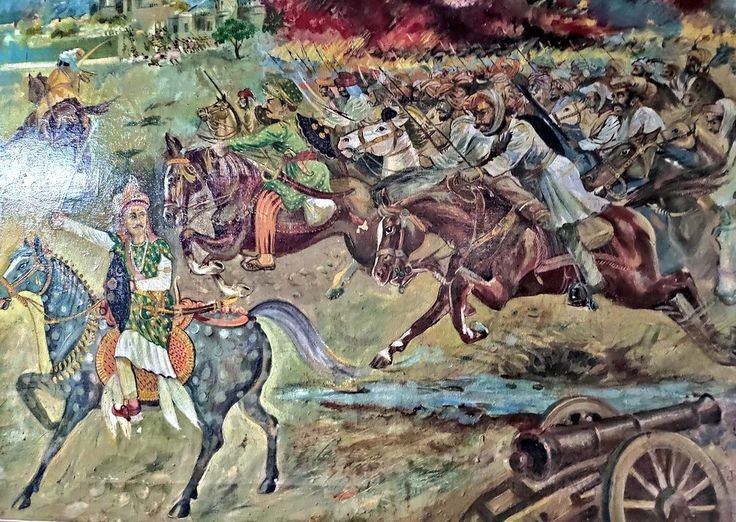The Treaty of Baroda, signed in 1731, was a pivotal agreement between the Maratha Empire and the Mughal Empire, specifically the governor of Gujarat. This treaty reshaped the power dynamics of Western India during the early 18th century. Here's a closer look at the people, context, and impact of this significant event.
People Involved-
- Maratha Empire: Led by Baji Rao I, the Peshwa (Prime Minister) of the Maratha Empire. Baji Rao I was a brilliant military leader and strategist who played a crucial role in expanding Maratha influence across India.
- Mughal Empire: Represented by Sarbuland Khan, the governor of Gujarat. During this period, the once-mighty Mughal Empire was weakening, forcing regional governors to negotiate with rising powers like the Marathas.
Pre-Treaty Context
- Under Baji Rao I’s leadership, the Marathas were rapidly expanding, seeking to assert control over territories that had been under Mughal rule.
- The Mughal Empire, once dominant, was crumbling due to internal conflicts, inefficient administration, and the loss of central authority, creating a power vacuum.
- Gujarat, a wealthy and strategically vital region, was a battleground, contested fiercely by the Marathas and the Mughals.
- Before the treaty, there were numerous skirmishes between Maratha forces and the Mughal governor's troops, causing widespread instability and suffering in the region.
Post-Treaty Context
- The Treaty of Baroda effectively acknowledged Maratha control over Gujarat, with the Mughals agreeing to pay a tribute.
- This treaty cemented the Maratha Empire’s influence in Western India and marked a significant decline in Mughal authority.
- Gujarat’s administration shifted as Maratha officials took on more prominent roles, integrating the region into the Maratha governance system.
Casualties-
- Exact casualty numbers from the conflicts leading up to the treaty are not well-documented. However, it is known that many battles and skirmishes resulted in significant loss of life among both soldiers and civilians due to the ongoing instability.
Impact-
- Political: The treaty marked a significant power shift from the Mughals to the Marathas in Western India, further weakening the Mughal Empire and boosting Maratha prestige.
- Economic: The tribute system established by the treaty provided the Marathas with significant revenue, which they used to fund further military campaigns and consolidate their power.
- Administrative: The treaty led to administrative changes in Gujarat, with Maratha officials implementing their systems of governance and taxation.
- Military: The treaty reduced immediate conflict in the region by establishing clear lines of control and tribute, though it did not end all hostilities.
Human Side-
- Civilians: The frequent conflicts before the treaty caused immense hardship for local people, including loss of life, displacement, and economic disruption. The treaty brought a measure of stability, providing much-needed relief to civilians exhausted by constant warfare.
- Soldiers: Both Maratha and Mughal soldiers faced the dangers of battle, with many losing their lives or sustaining injuries. The end of open hostilities provided a respite from the ongoing threat of combat.
- Local Governance: Local administrators and nobility had to adapt to the new power dynamics, aligning themselves with Maratha authority to maintain their positions and influence, navigating a complex and changing political landscape.
The Treaty of Baroda was thus a crucial moment in the evolving political landscape of 18th-century India, highlighting the decline of Mughal power and the rise of the Maratha Empire as a dominant force. It not only reshaped regional control but also brought significant changes to the lives of those living in Gujarat and beyond.

Nice informative blog Hrishikesh
ReplyDelete